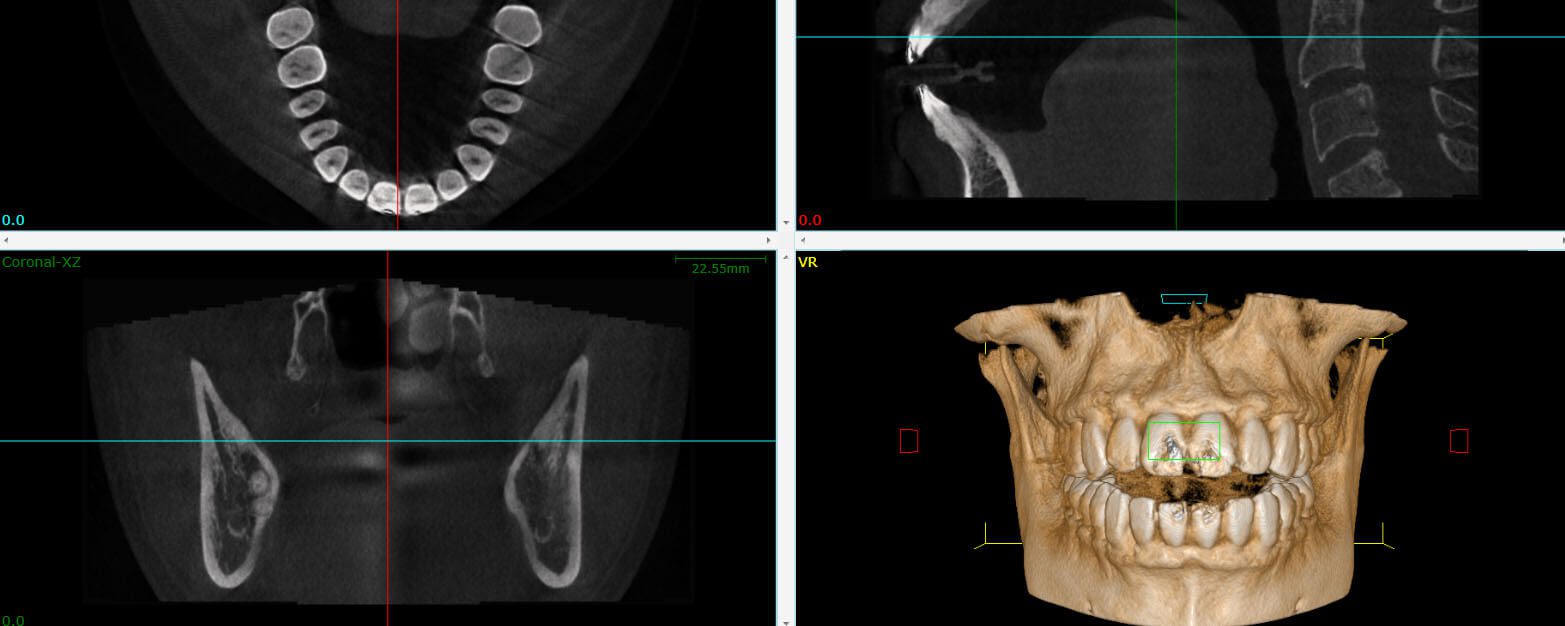Seeing Inside the Bone with a 3D Cone CT Scan

What Is Cone Beam Computed Tomography?
A cone beam CT creates a 3D view and cross-sections of the target area. The information it provides is critical for a number of situations. Our office utilizes this techno logy to aid in performing complex root canals or to search for the source of pain or infection. CBCT gives us the information we need about your condition before a dental procedure. It is not required for every case and is only taken when necessary.
The Difference Between CBCT and a Hospital CT or CAT Scan
Dental cone beam CT emits less radiation and provides a more complete picture than CT and CAT scans. Hospital CTs work by taking a series of parallel X-ray images of the head, from top to bottom. That leaves gaps between each image, which have to be filled by the computer’s educated guesses, and that many X-rays come with a lot of radiation.
A cone beam CT circles the head, which overlaps each image or slice, leaving no gaps. The radiation is also much weaker. The most radiation hits the area of interest, which is where the images overlap to construct the 3D model. This is how CBCT is able to provide a more complete image with less radiation exposure.
How Do I Benefit from Cone Beam 3D Imaging?
Aside from providing more complete information, dental CBCT scans, therefore, emit much less radiation than Medical CT Scans. The risk associated with this lower level of radiation is much less than that of getting an inaccurate diagnosis but still is only used when a conventional x-ray is not enough for an accurate diagnosis. When necessary, a CBCT scan ensures that Dr. Grossman or Dr. Geisler will have a better chance of diagnosing your problem with more accuracy. If there is still a question about a diagnosis then the 3D radiograph will be forwarded to a Maxiallofacial Radiology Specialist. For more information about cone beam 3D imaging, give us a call at (905) 668-6747 or send us an email.
